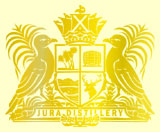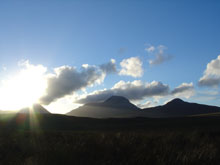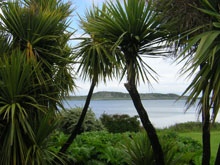Our History
Whyte & Mackay's 'Double Lion' blend has its origins in the Glasgow firm of Allan & Poynter, founded in November 1843 by John Poynter, a successful chemical manufacturer, and William Allan, a ham curer. The firm was originally to warehouse dry goods for the grocery trade. In the course of time the business changed hands and the new owner, William Scott recruited two young men to help him in the business, James Whyte and Charles Mackay.
By the end of the 1870's the firm was warehousing more and more whisky as wine and spirit merchants sought a substitute for brandies made unavailable by phylloxera. When William Scott died his widow sold the business to James Whyte and Charles Mackay. One of the conditions of the sale was that they were not to use the name Allan & Poynter and the firm was renamed Whyte & Mackay. The young partners had no doubt that if they were to make a success of the venture they had to invest in whisky blending plant as soon as possible. It took two years to find and equip suitable premises in Robertson Lane, Glasgow. They received their first consignment of grain and malt whiskies and began blending to customers' orders. they later began blending on their own account for the export trade. No sooner had the partners taken this decision than whisky sales collapsed. They managed to weather the crises at the beginning of the 20th century, even expanding sales of their Whyte & Mackay whisky on the eve of the First World War.
In 1919 a limited company was formed and the indications are that the intention was to place the company on a care and maintenance basis until the future of the trade could be predicted with more certainty after the wartime depredations. Charles Mackay died in 1919 and John Whyte in 1921. For small concerns like Whyte & Mackay the going was rough in the 1920s and the firm was reconstructed in 1926 to reduce its capital stock levels. Trade began to pick up in the late 1920s with a resurgence of export orders, particularly from North America. This proved short-lived and assessments of the potential of the United States market after the end of prohibition were hopelessly optimistic. Eventually trade revived in the late 1930s with a growth in exports to Australia and New Zealand.
Again prospects were dimmed by the outbreak of war. It was not until the 1950's, under the direction of James Whyte's two sons, Hartley and Alex, that the recovery was sustained with a determined advertising campaign. With the end of voluntary rationing on the home market, Whyte & Mackay began to build its sales in the United Kingdom. In 1960 the company acquired Dalmore distillery in the north-east of Scotland and was renamed Dalmore, Whyte & Mackay. By 1965 Whyte & Mackay was the fifth most popular brand in Scotland. This achievement was followed by a successful redoubling of efforts in export markets.
The company became part of Sir Hugh Fraser's SUITS group in 1971. Two years later Tomintoul and Fettercairn distilleries were purchased. SUITS was acquired by Lonrho in 1981 and subsequently Whyte & Mackay was sold to Brent Walker in 1988 and then to American Brands (now Fortune Brands) in 1990. In 2001 Fortune Brands sold Whyte & Mackay to 'Kyndal' in a £200 million management buyout backed by German investment bank, WestLB. In February 2005, Vivien Immerman bought Whyte & Mackay from WestLB and embarked on a long term investment programme to ensure the continued international success of Whyte & Mackay. During 2006, in a dramatic display of confidence, Whyte & Mackay was relaunched with a new look inspired by its proud Glasgow heritage. The famous double lions rampant once more took centre stage, resuming their rightful place as iconic sybol of the brand and company. The new look incorporated a 'Charles Rennie Mackintosh' feel in tribute to Glasgow's stylish nature. The original Whyte & Mackay blend was renamed "SPECIAL", as it was at the very beginning of Whyte & Mackay. In addition, 13, 19 and 22 years old aged blends with an extra year of maturation were added to the brand's award winning range. Whyte & Mackay went "back to the future" to rediscover its proud Glasgow roots in stylish, masculine packaging which truly reflects the quality of scotch in the bottle.


























